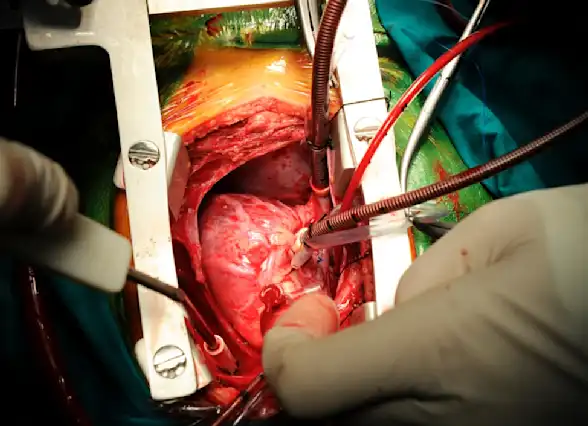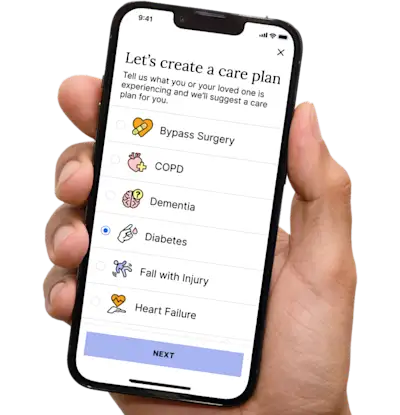Coronary Artery Bypass Graft (CABG) Surgery
Coronary artery bypass graft (CABG), also known as "open heart" and "bypass" surgery, restores blood flow to blocked arteries of the heart.
Get insurance benefits, legal documents, and medical records in one place

Coronary Artery Bypass Surgery
Blocked coronary arteries cut off blood flow to the heart causing heart attacks or heart attack-like symptoms.
Coronary artery bypass graft (CABG), also known as bypass surgery or open heart surgery, is a procedure to restore blood flow to areas of your heart.
CABG restores blood flow by using blood vessels from other parts of the body to create a detour around blockages... A "bypass".
The surgery
Vessels that create the bypasses are "harvested" from the leg, arm, or chest. This means that there will also be surgical incisions in the areas from where vessels were taken. (This is pre-determined and will be explained before surgery.)
The breast bone is cut through and retracted (pulled back) to expose the heart (which is actually in the center of the chest, not on the left side of the chest).
Surgery usually takes 3 to 6 hours, depending on the number of arteries involved and barring any complications.
Following surgery, the breast bone is rejoined, usually by sewing it together with wires. The overlying skin is stapled closed. The surgical incision is significant, about 8-10 inches long.
There may also be 2 to 3 smaller incisions (around half an inch) below the large incision, across the upper belly.
Hospital stay
Expect your loved one to spend 1 to 2 days in an intensive care unit before moving to a cardiac step-down unit for the remainder of their stay. The length of their entire hospital stay depends on how well they recover and if there are complications. The average hospital stay for people who have coronary artery bypass surgery is 5-7 days.
RESOURCES
American Heart Association (AHA) - Heart Surgery & Recovery Resources
Cleveland Clinic – Coronary Artery Bypass Surgery
Johns Hopkins Medicine – Coronary Artery Bypass Graft Surgery
Mayo Clinic – Coronary Artery Bypass Surgery
No content in this app, regardless of date, should ever be used as a substitute for direct medical advice from your doctor or other qualified clinician.
Get more support and guidance on insurance benefits, medical records and legal forms.
Helpful brings together your insurance benefits, legal documents, and medical records in one personalized place — so you always know what you have, and never have to search again.

Technology for Health Tasks. Mental Health for the Tough Stuff.
Helpful connects your medical records, insurance, and caregiving tasks automatically. And when you need more than logistics, a therapist is here to guide you.
In-Network and Covered
For Individuals, Couples and Families
HIPAA Compliant, Data Stays Private


Healthcare Tasks Simplified

From syncing records to spotting drug interactions, Helpful does the heavy lifting, turning complex health info into clear tasks and showing you benefits you can actually use, giving you clarity and control over your care.

In-Network Mental Health

Our licensed therapists are here to support you and your loved ones through stress, burnout, and life’s hardest moments, with an inclusive, compassionate approach that works with most insurance plans.

Create Legal Documents

Plan ahead by creating will, trusts, advance directives and more, that ensure your wishes are honored in the event you can’t speak for yourself -with Helpful guiding you every step of the way.